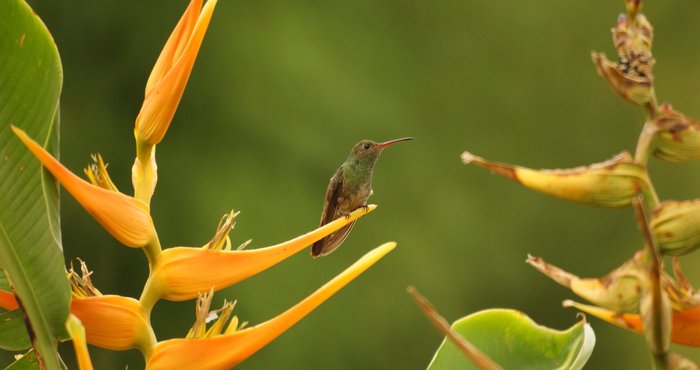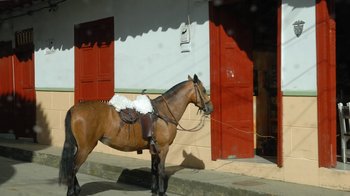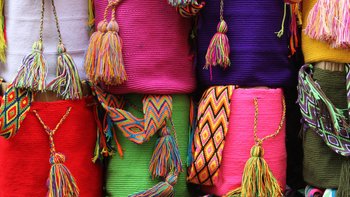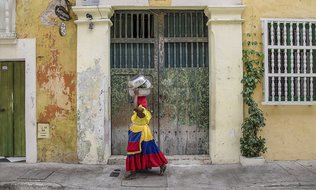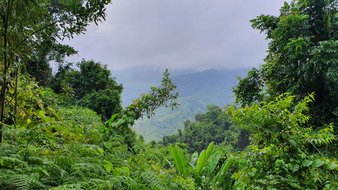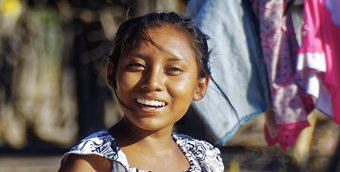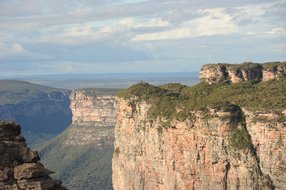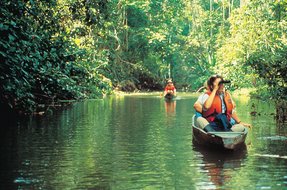Travelling in Colombia: varied and surprising - INTI Tours
An undiscovered jewel
Colombia - a fascinating tourist destination whose tourism is just starting to develop. This dreamlike green country is named after the great conquistador Christopher Columbus, who went down in history as the discoverer of America.
When travelling in Colombia, you can expect dreamlike islands and beaches on the Caribbean and the Pacific, traditions and colonial flair as well as Andean peaks and jungle. The scenic richness of the different climatic zones and authentic encounters with the hospitable and cheerful Colombians will inspire you. Let yourself be carried away by hot rhythms and South American joie de vivre. Explore cities like Cartagena and Medellín, the archaeological sites of San Agustín and Tierradentro as well as the coffee regions on the green mountain slopes.
Experience the impressive facets of Colombian nature and culture - pristine and unspoilt and unwind in selected small hotels.
Bienvenidos a Colómbia!
Country information Absolut sehenswert Facts and figures Travel in Colombia Addresses
Our types of travel in Colombia
Examples of individual dream trips in Colombia
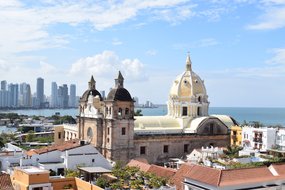
Individual trip: By Rental Car through Colombia
From Bogota to colonial villages and coffee fincas to the lively coastal city of Cartagena, you will get to know many facets of Colombia. The different climates and landscapes will inspire you as much as the authentic encounters with the hospitable Colombians.
16 days Rundreise 2 up to 6 travellers
upon request
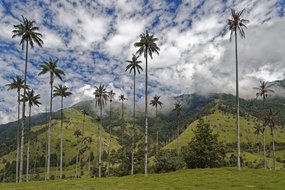
Individual Colombia Tour: Culture - Coffee - Pacific - Caribbean
The different climates and landscapes such as mountainous regions, Pacific lowlands and Caribbean beaches will delight you as much as the authentic encounters with the hospitable Colombians.
22 days Individualreise 1 up to 6 travellers
upon request
You might also like this...
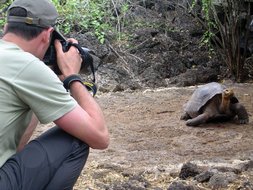
Ecuador - Galápagos
In the animal paradise: We can offer you different options for visiting the Galápagos Islands. Either you take a Galápagos cruise and travel from island to island or you prefer the Island Hopping offered here as an example.
4 days Gruppenreise 2 up to 10 travellers
upon request
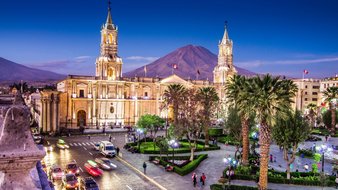
Peru Experience the Land of the Incas - Option I
The trip "The Land of the Incas - Varinate I" is suitable for those who visit Peru for the first time. It dives deep into the region of the Incas around Cuzco and the Sacred Valley.
12 days Gruppenreise 2 up to 12 travellers
upon request
Country information on COLOMBIA: "Coffee beans, cultural treasures and the Caribbean"
Colombia is located in the very north of South America. It is the second largest country on the continent in terms of population. The country borders the Pacific Ocean as well as the Caribbean Sea. In the northwest, it borders Panama and thus forms the connection to Central America. To the east, the country borders Venezuela, to the southeast Brazil, to the south Peru and to the southwest Ecuador. The country's name is derived from the official discoverer of the American continent, Christopher Columbus.
Unfortunately, Colombia is still often associated with drug cartels and guerrillas. Yet the country, which is a good 1 million square kilometres in size, has real natural treats to offer with its Pacific and Caribbean beaches, the Amazonian lowlands and the mountains. Beautiful colonial cities like Popayán, Mompox and Cartagena enchant with their historic and lively centres - in Cartagena, the entire old town is a UNESCO World Heritage Site. Fascinating are archaeological sites such as Tierradentro and San Agustín or deep in the Sierra Nevada de Santa Marta the so-called "Lost City". Colombia's island world attracts sun-seekers as well as divers and other water sports enthusiasts. You could say the country has awoken from its slumber and is currently enjoying growing popularity among travellers.
Capital Bogotá:
Bogotá is located in the fertile high plateau of the Andes, the so-called Sabana de Bogotá, at 2,640 metres above sea level. Although the Colombian capital is located in the tropics, the altitude means that the climate is temperate, with a mean annual maximum temperature of 16 degrees Celsius. Temperatures rarely exceed 23 degrees Celsius and can also reach freezing point on cloudless nights. Bogotá lies in a depression at the foot of the two mountains Guadalupe (3,317 metres above sea level) and Monserrate (3,152 metres above sea level). Since the city is located on the tectonic plate of South America, it also experiences earthquakes from time to time. These and additional fires over the course of history have led to the fact that a large part of the buildings from the colonial era are no longer preserved.
Absolutely worth seeing:
- Guided tour of the old town surrounded by colonial architecture, baroque churches and art deco buildings. Don't miss the picturesque cobblestone streets of La Candelaria and the Plaza de Bolívar, surrounded by some of the city's most famous historical buildings, such as the Catedrál Primera and the Capitolio Nacional. Instead of using a motorised vehicle or walking, Bogotá can also be wonderfully explored by bicycle, preferably with a guided bicycle sightseeing tour.
- Visit to the world famous gold museum Museo de Oro, where fantastic gold work and jewellery from past cultures of Colombia are on display.
- In the Botero Museum you will find some of the greatest works by the Colombian artist of the same name Fernando Botero.
- Bogotá's markets are worth a visit, e.g. the Saturday flea market Mercado de las Pulgas.
- A cable car takes you up to Monserrate, and on a clear day you have a fabulous view of the city and the surrounding mountainous area.
- If you want to learn Spanish or improve your Spanish, we recommend the Whee Institute in Bogotá.
- Excursion to the salt mine and salt cathedral Catedral de Sal to Zipaquira.
- Excursion with hike to Colombia's largest waterfalls El Chiflón and Cascada La Chorrera.
- Day trip to a coffee farm. Experience all stages of the production process from the bean to the infusion of the fresh, invigorating coffee.
- Day trip to the Laguna de Guatavita. According to the legend of El Dorado, an important pre-colonial ritual took place here. It was the ceremonial place where the indigenous people sent their Muisca chief, powdered with gold dust, out onto the water on a wooden raft loaded with offerings for a sacrificial bath.
Colombia's Caribbean coast:
The approximately 1,600 kilometre long Caribbean coast in the north is one of the most popular travel areas in Colombia. The largest city in the so-called Región Caribe is the megacity of Barranquilla. Other urban centres are the historic and beautiful coastal city of Cartagena de Indias, the popular seaside resort of Santa Marta, Montería and Valledupar. The imposing Sierra Nevada de Santa Marta is considered the highest coastal mountain range in the world. It is home to the Tayrona National Park and the mysterious Ciudad Perdida. Fishing villages, seaside resorts, hidden bays with picturesque sandy beaches and colonial jewels paired with Caribbean flair and joie de vivre make the region unique. Several islands and island groups off the coast offer a Caribbean holiday paradise for every taste.
Absolutely worth seeing:
- Cartagena de Indias captivates with its colonial charm and cultural offerings, and it is rightly considered one of the most beautiful cities in South America and the pearl of the Colombian Caribbean coast. Cartagena was founded as early as 1533 because of its natural harbour, making it one of the first Spanish cities to be founded on the entire continent. The historic city centre with its fortress walls has been a UNESCO World Heritage Site since 1984. Beautiful colonial buildings with courtyards, cobbled streets with countless palaces in Andalusian style, restaurants and hotels in historic buildings as well as a rich cultural offer ensure a high quality of life for residents and visitors alike.
- Colombia's fourth largest city, Barranquilla, could be described as a lively mix of Africa and the Caribbean. With no sights worth mentioning, Barranquilla turns into a bubbling, exotic celebration at carnival, which UNESCO has declared an intangible world heritage site.
- The pretty colonial coastal town of Santa Marta is home to the death house of the great freedom fighter Simon Bolívar. The Sierra Nevada de Santa Marta towers in the background of the city. Nowhere else do such high mountains with snow-capped peaks rise above 5,700 metres above sea level directly by the sea, only about 45 km from the coast.
- To the west of Santa Marta lies the Tayrona National Park - already designated as a national park in 1969. A paradise with the finest white sandy beach, lined with coconut palms and large washed out with a turquoise sea awaits.
- A five-day trek to the Lost Ruin City of Ciudad Perdida starts in Santa Marta and leads about 40 km southeast into the Sierra Nevada de Santa Marta. The impressive ruins complex consists of about 200 oval and round terraces, which are connected partly by steep and partly by flat stone paths. Along with the legendary Peruvian Machu Picchu, it is one of the largest pre-Columbian cities in South America. At one time, more than 8,000 members of the Tairona probably lived here.
- In the far west, near the border with Panama, is the village of Capurganá, popular with divers and water sports enthusiasts for its crystal-clear waters and unspoilt, beautiful sandy beaches.
- The three Caribbean islands of San Andrés, Providencia and Santa Catalina lie just 200 km off the coast of Nicaragua, yet they belong to Colombia. The islands are of volcanic origin, surrounded by turquoise blue sea with magnificent coral reefs. San Andrés is more developed and frequented than Providencia and Santa Catalina, where it is even quieter and more pristine.
- The island world of the Islas del Rosario spreads out about 40 km southwest of Cartagena. 28 islets invite you to relax and enjoy water sports. The islands belong to the city of Cartagena and are part of a national park.
Colombia's Pacific Coast:
The Colombian Pacific coast is difficult to access due to its unique topography. At the same time, this is what makes it so appealing, because the region is largely untouched and has an overwhelming biodiversity with rainforests and dreamlike stretches of coastline. It is one of the most water-rich areas in the world in terms of rainfall and river system. Two of Colombia's most important river courses drain into the Pacific here - the Rio Atrato with a length of 750 km and 150 navigable tributaries and the Rio San Juan with the world's largest platinum deposit. Almost the entire region down to the sea is covered by impenetrable rainforest. Travel is almost exclusively by boat or plane. An earth track that can be travelled by four-wheel drive vehicles connects Quibdo with Medellin. Due to its remoteness, this area is also the "poorhouse of Colombia". The majority of the people living here are Afro-Cubans, whose ancestors were brought here as slaves from the mid-16th century after the discovery of gold and other precious metal deposits. Indigenous people were forcibly resettled. The region still lives from the mines, precious woods and fishing. The development of sustainable tourism should give the people a positive future-oriented perspective.
Absolutely worth seeing:
- The small tropical village of Nuqui directly on the Pacific coast is surrounded by tropical rainforest. From here you can explore the surroundings: Relaxation on the beach, hikes in the jungle, baths in thermal springs, diving in the Pacific, whale watching, etc.
- From July to September, the humpback whales come to the coast off Ladrilleros to give birth to their offspring in the warmer waters.
- The island of Gorgona can be reached by boat from Guapi. Located 50 km off the coast, it is only about 9 km long and 2.5 km wide. The island has been a national park since 1984. The island is well-known among divers because the underwater world is fantastic.
The so-called coffee triangle of Colombia:
Located in the central west of Colombia and about 200 km west of Bogotá, the Coffee Triangle is part of the Andean region of Colombia. It is made up of the three states of Risaralda, Quindío and Caldas, which are experiencing solid economic development through coffee production and related industries, as well as increasing tourism. The area covers a good 13,000 sq km and stretches from 900 m.a.s.l. up to the snow-capped peaks at over 4,000 m.a.s.l. Therefore, it has a variety of different and climatic and natural conditions. The coffee variety exclusively cultivated here is Arabica, which thrives best at an altitude of between 1,000 and 2,000 metres above sea level on wide slopes. Plenty of sun, sufficient rain as well as fertile volcanic soil make this coffee one of the best highland varieties in the world. The capital of the coffee triangle is Pereira in the state of Risaralda, with a population of about 500,000. This region of Colombia is also known as the soul of the country, as coffee production is a very old traditional way of life here. At the beginning of the 16th century, the first coffee beans arrived in the "New World" in the Dutch Antilles (today Suriname), from where the beans and bushes spread over the whole of America over time. There is no record of exactly how and when coffee came to Colombia. The first beans are said to have been brought to the region by Jesuits in 1730, and the first coffee plantations are said to have existed in the eastern part of the country. From 1835, the first commercial production began under the name "Cucutá" near the border with Venezuela. Around 1850, plantations are said to have shifted more and more to the western regions of Colombia. Here, the conditions for coffee plantations are optimal and due to the rapid development of the transport system within Colombia between 1880 and 1950, a real boom could take place. In 2011, UNESCO designated the so-called Zona Cafetera as a World Cultural Landscape.
Absolutely worth seeing:
- Of course, a visit to a coffee finca is a must in this region of the country. There are many different options here, from coffee fincas that are well prepared and equipped for tourism to small family-run businesses. Many coffee fincas also offer wonderful, comfortable accommodation for visitors.
- One of the most colourful colonial villages in this region is Salento, surrounded by tropical vegetation.
- Pretty Salento is the starting point for a day trip to the fabulous Valle de Cocora with its forest of wax palms. Wax palms are not only the national plants of Colombia, but also the largest palm species in the world, reaching up to 60 metres in height.
- A day hike of approx. 6-7 hours leads from Salento and the Valle del Cocora into the lush cloud forests of the surrounding mountains of Los Nevados National Park and into the home of countless bird and plant species. This excursion is known as the Acaima Cloud Forest Trekking.
- Marsella, with its colourfully painted house of culture, is also a picturesque "cafetero village" worth seeing.
- Manizales is considered the most beautiful metropolis in the coffee region. From there you can reach the 5,400-metre high volcano Nevado del Ruiz. The route takes you from the tropical region up to the so-called páramo. At altitudes of 3,000 and 4,500 metres above sea level, a very unique vegetation spreads out, including the crested rosettes of the unique frailejones, which can grow up to eight metres high.
- Those seeking active adventure will also find plenty of opportunities in the Zona Cafetera, be it trekking, horseback riding, paragliding, canopy, rafting, canyoning or abseiling down one of the numerous waterfalls.
- From Pereira you can start the La Brujita mountain bike tour - a very special experience with great scenery and various rustic means of transport besides your own bike.
- Trekking from Filandia in the Barbas-Bremen Regional Park with its abundance of birds and large occurrence of howler monkeys.
- Full day trekking tour from El Cedral in La Pastora Nature Reserve.
Colombia's south:
The south of Colombia is very diverse. From the dry Tatacoa Desert, with temperatures of up to 40 degrees Celsius, you quickly reach the lush green surroundings of the Magdalena River. The mountain flanks of the high Andes rise to the right and left. Urban centres are Popayan, resplendent in colonial splendour, and lively Cali. Archaeological treasures can be found near the small colonial village of San Agustin. Mysterious burial chambers and tomb guards carved in stone await visitors at the San Agustin and Tierradentro sites, which have been declared World Heritage Sites by UNESCO. On the border with Ecuador is the Putumayo region, which is often called the gateway to the Colombian Amazon. In the Amazon region itself, there are 28 protected areas where Indian tradition as well as the ecological diversity of the lush rainforest is preserved. The two major rivers in the Colombian rainforest are the Putumayo and, of course, the Amazon. The Colombian Amazon covers almost a third of the country's area and is extremely sparsely populated.
Absolutely worth seeing:
- Cali is Colombia's second largest city after Bogotá, and is also called the capital of salsa. Cali is located on the eastern slopes of the Western Cordillera in the Cauca Valley, which also gave its name to the entire region. The old town is well worth seeing and can be explored on foot. Many stately homes bear witness to the splendour of earlier years.
- Popayán, founded in 1537 - known as the "white city" of Colombia, so named because of its colonial houses, which are predominantly painted white and no higher than two storeys. The city is student, artistic and intellectual on the one hand, but traditional and religious on the other.
- Excursion from Popayán to the Andean village of Silvia, about 55 km away, where a traditional indigenous market is held on Tuesdays.
- North of the city of Neiva lies the Tatcoa Desert near the small town of Villavieja. A dry forest grows here in the midst of the otherwise lush green Colombia. Erosion has formed canyons and imposing formations.
- San Agustin is one of the most important archaeological sites in South America. The many statues and tombs carved in stone have been UNESCO World Heritage Sites since 1995. Horseback riding excursions are very popular in the area.
- Tierradentro has also been declared a UNESCO World Heritage Site since 1995. The burial chambers carved into the volcanic rock are partly decorated with still preserved wall paintings.
- The city of Leticia is located at the southernmost tip of Colombia, right at the border triangle of Colombia, Brazil and Peru. All jungle tours in Colombia, which are more for adventurers and explorers, start from here.
Facts and figures Colombia:
Land area: just under 1.14 million sq km
Population: 49 million - 48% mestizos, 30% whites, 14% mulattos and creoles, 4% of African descent and the rest divided into Zambos (indigenous and African descent) and Indian descent
Capital: Bogotá with 7.4 million inhabitants, metropolitan area 7.8 million
Highest mountain: Pico Cristóbal Colón, 5,775 metres high
Form of government: presidential democracy
History: Colombia was discovered for Europe in 1499 by Alonso de Ojeda and Amerigo Vespucci. Lured by gold and emeralds, the conquerors occupied the country. The conflict that led to independence from Spain took place in Colombia between 1810 and 1819. Led by Simón Bolívar, one country after another declared its independence, Colombia celebrating its independence on 11.11.1811. In 1821 Bolívar was elected its first president. However, his dream of a Greater Colombia uniting Colombia, Venezuela, Ecuador and Panama lasted less than ten years. The entity disintegrated in 1830 and the liberator died embittered in Santa Marta. In 1886, Colombia became the first democracy in Latin America and the second in the entire double continent after the USA.
Economy: Colombia's economy has been growing steadily since the 1990s, making it the largest growth market in South America after Chile. In the past 20 years, consumer goods and basic industries have been increasingly expanded. Today, the food and textile industries play the biggest role. A large part of the Colombian economy is directly or indirectly influenced by the cultivation and production of illegal drugs. The aid organisation Bread for the World reported in 2009 that Colombia accounts for around 70 % of global cocaine production. Colombia is generally considered to have great economic potential. This is due, among other things, to the advanced industrialisation and the large amount of raw materials.
Currency: Colombian peso
Language: Spanish
Festivities: In the first days of the year, the second largest carnival in Colombia is celebrated in Pasto at the foot of the Galeras volcano. Pre-carnaval starts as early as 28 December to give thanks for water and the environment, followed by parades on 31 December and 3 and 4 January. The Carnaval de Blancos y Negros has meanwhile been declared an intellectual cultural heritage of humanity by UNESCO.
From 2 to 3 January, the "Feria de Manizales" is celebrated with horse processions, tango, music and the election of the International Coffee Kings.
On the four days before Ash Wednesday, Barranquilla celebrates the exuberant and colourful carnival, which, with its more than one hundred years of history, was declared an intellectual cultural heritage of humanity by UNESCO in 2003.
At the end of April/beginning of May, the best accordion player of the year in Valledupar is chosen through various competitions at the "Festival de la Leyenda Vallenata".
Semana Santa in Holy Week and Easter is celebrated with processions. Mompós, Popayán or Pamplona are among the most magnificent.
Every two years in March/April, the world's largest theatre festival takes place in Bogotá. In 1988, the festival takes the form of street theatre, with well-known performers and writers from all over the world showing their skills.
From mid-June, the folklore festival with the election of the National Bambuco Beauty Queen takes place in the city of Neiva in the south of Colombia.
In July, the largest rock festival in Latin America, "Rock al Parque", takes place in Bogotá with free admission.
For ten days in August, the city of Medellín blossoms with a sea of flowers, colourful costumes and parades at the Flower Festival.
The Salsa Festival in Cali is in September.
The "Festival de Tambores" is celebrated in October on the Caribbean coast in Palenque de San Basilio. Music as well as African-Colombian style traditions are showcased.
Cartagena celebrates Colombia's declaration of independence from Spain in 1811 in grand style every year on the days around 11 November at the Carnaval de Cartagena. For several days, this event is celebrated with parades and various events.
The Feria de Cali is a huge festival with bullfights, pageants and live concerts.
Travelling in Colombia:
Entry requirement: Travel documents must be in good condition and valid for at least the intended duration of stay at the time of entry. Damaged travel documents (e.g. frayed outer cover, loose binding of pages) usually lead to refusal of entry. A return or onward flight ticket may be required upon entry. Travellers who have ever reported their current passport as lost or stolen should ensure that the report is completely deleted from the Interpol file before departure. Otherwise, entry will usually be refused.
Upon entry at the airports, all luggage is checked by scanner. Sometimes there are also physical searches for drugs without suspicion. If your luggage is searched on suspicion of drugs, you should definitely try to bring in an independent witness. German-Colombian dual nationals must enter and leave the country with a Colombian passport.
German nationals do not require a visa for a purely tourist stay in Colombia.
Vaccinations: No compulsory vaccinations are required for direct entry from Germany. However, a yellow fever vaccination is strongly recommended for all travellers before entering an area where yellow fever is present in Colombia.
Climate/travel season: Colombia can be visited all year round. There are only two seasons in Colombia - a dry season and a rainy season. The dry season coincides with the best time to travel and includes the months of July to August and December to March. However, the climate is subject to certain variations from region to region. Depending on the area, however, different weather conditions prevail. The Andes are good to visit all year round. The best time to travel to the Caribbean coast is from December to April. The Amazon region is hot and humid all year round. The optimal travel time for whale watching on the Pacific coast is from July to November. For travel to the southern Pacific coast, the months of July and August are recommended. The northern Pacific coast is extremely rainy. It receives high amounts of rainfall throughout the year. Between December and April, it rains a little less compared to the rest of the year. Temperatures in this area are hot all year round.
Local time: During summer time in Germany from the end of March to the end of October, the time difference to Colombia is -7 hours. During the so-called winter time between the end of October and the end of March, the time difference to Colombia is only -6 hours.
Addresses:
Colombian Embassy
Kurforstenstraße 84
10787 Berlin
Phone +49 (30) 26 39 610
Fax +49 (30) 26 39 61 25
info@botschaft-kolumbien.de
http://www.botschaft-kolumbien.de


